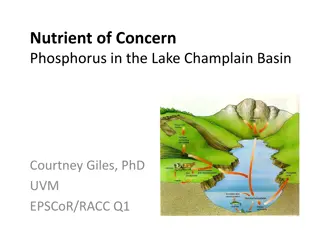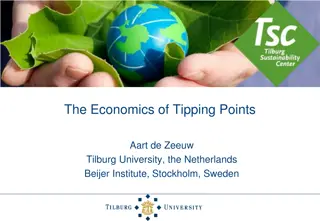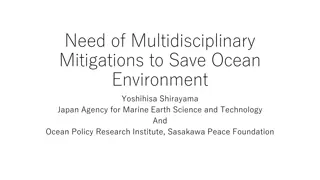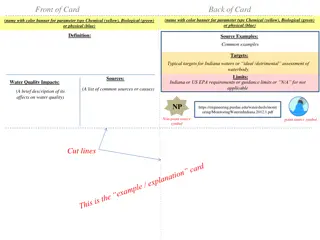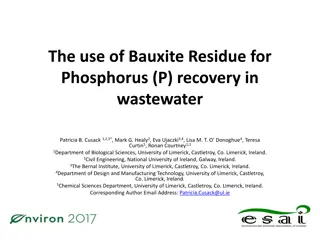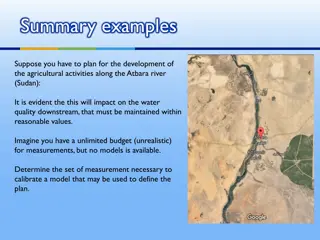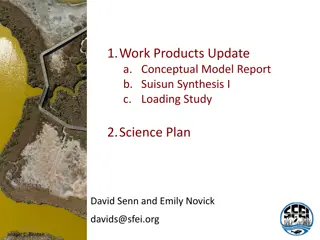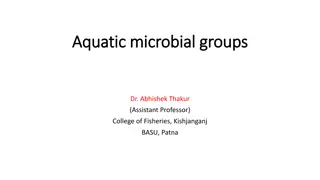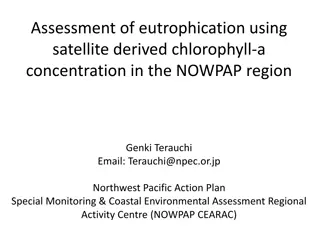Understanding Human Impact on Water Systems in Agriculture
Human activities, such as animal farming, can significantly impact the Earth's surface and water systems by introducing excess nutrients and waste runoff. This leads to eutrophication, soil erosion, and water contamination. Farmers are working on conservation practices to mitigate these issues, such
2 views • 10 slides
Understanding Waste Management in Agriculture
Waste management in agriculture involves addressing issues such as farm waste, chemical fertilizer misuse, and animal manure excess to prevent water pollution and eutrophication. Proper management practices are crucial for agricultural sustainability and environmental protection.
1 views • 34 slides
Exploring Phosphorus: History, Distribution, and Impact in the Lake Champlain Basin
Explore the history and significance of phosphorus, a nutrient of concern in the Lake Champlain Basin. From its discovery by Hennig Brand in 1669 to its various uses in fertilizers, detergents, and even warfare, phosphorus plays a critical role in the environment. Discover the global phosphorus pool
0 views • 53 slides
Understanding Tipping Points in Ecological and Economic Systems
Delve into the complex dynamics of tipping points in ecological systems such as insect outbreaks, eutrophication of lakes, and bleaching of coral reefs, as well as their economic implications. Explore the interactions between human behavior and environmental factors, and the challenges in managing t
0 views • 29 slides
Multidisciplinary Mitigations for Ocean Environment Conservation
Global ocean climate change poses significant threats to marine ecosystems, requiring multidisciplinary approaches for mitigation. Japanese research highlights expanding distributions of reef-building corals, deep-sea water temperature rise, ocean acidification impact on marine plankton, and thinnin
0 views • 4 slides
Understanding Water Quality Parameters and Glossary of Terms
These informative quick cards offer insights into key water quality parameters such as chemical, biological, and physical readings for assessing water health. The glossary of terms provides definitions essential in understanding water quality science and management, ranging from eutrophication to po
2 views • 18 slides
Utilization of Bauxite Residue for Phosphorus Recovery in Wastewater
This study explores the potential of using bauxite residue, a by-product of the aluminum industry, as an adsorbent for phosphorus recovery in wastewater treatment. With the increasing demand for phosphorus and declining phosphate rock supplies, alternative methods like utilizing bauxite residue coul
0 views • 23 slides
Planning Agricultural Activities Along Atbara River in Sudan
Development of agricultural activities along the Atbara River in Sudan necessitates careful consideration of water quality downstream. Measurements must be collected to calibrate a model for effective planning. Parameters such as temperature and flow rates need to be estimated, requiring a substanti
0 views • 9 slides
Nutrient Conceptual Model Review Summary
Comments and feedback on a Nutrient Conceptual Model report include suggestions to address issues related to eutrophication concepts, nutrient stoichiometry, community composition, and nutrient reduction goals. Recommendations also focus on incorporating flushing/residence time discussions, predicti
0 views • 9 slides
Understanding Aquatic Microbial Groups and Their Environments
Explore the diverse world of aquatic microbial groups, their distribution in different water bodies, and their roles in ecosystems. Learn about the factors influencing microbial growth in water, the impact of eutrophication, bioremediation strategies, and the unique microbial communities found in es
0 views • 18 slides
Assessment of Eutrophication Using Satellite Chlorophyll-a Concentration in the NOWPAP Region
Assessment of eutrophication in the Northwest Pacific region is conducted using satellite-derived chlorophyll-a concentrations. Thresholds for eutrophic and oligotrophic conditions are defined, with a focus on the years 1998 to 2017. The potential enhancement of eutrophication assessment in coastal
0 views • 5 slides


